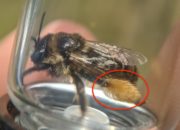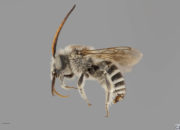Long-horned Bees (Genus Melissodes) are active from July through September, with at least 9 species known from Vermont. A few are true specialists, while others have a general preference for composites, and at least one species is a broad generalist. Field identification of most species is hard or impossible, thought there are a few distinctive ones. Host to Longhorn-Cuckoo Bees (Triepeolus).
Genus level ID
Long-horned Bees are medium-large bees that can be abundant in some context. Females have very long scopal hairs on their hind tibia and males have absurdly long antenna (hence the common name).
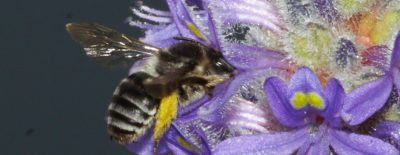
Pickerelweed Long-horned Bee (Melissodes apicalis)
The unique host plant and position of the hair bands on the abdomen make this a relatively distinctive bee. So far only found in a few of the largest Lake Champlain marshes, despite significant surveying on Pickerelweed throughout the state. Image courtesy Michael Veit
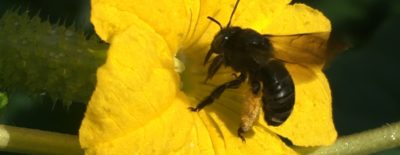
Two-spotted Long-horned Bee (Melissodes bimaculatus)
Distinctively all black with two small white spots on the abdomen. A mid-summer bee that visits a wide variety of flowers, including numerous garden plants. So far appears to be restricted to the Champlain Valley, but can be common at some sites.
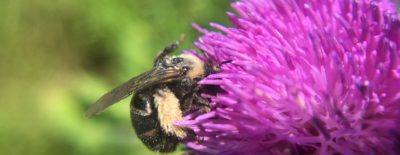
Thistle Long-horned Bee (Melissodes desponsus)
This thistle specialist is relatively distinctive and closely tied to its host. Appears to be fairly common in the Champlain Valley, but local and/or rare in the rest of Vermont.
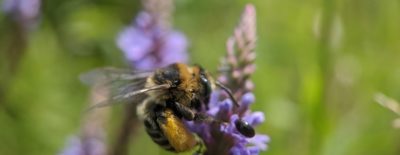
Drury's Long-horned Bee (Melissodes druriellus)
This is a common fall bee, at least in central VT, and has a preference for goldenrod. Females have a significant number of black hairs on their thorax and are at least occasionally identifiable from photos.
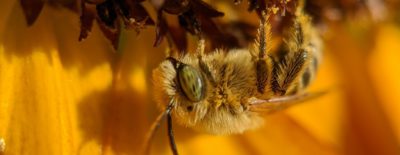
Sunflowers
Several Long-Horned Bees (Primarily Melissodes agilis and Melissodes trinodis) show a preference for sunflowers and can be common through the fall on planted sunflowers. Species level ID is very hard from photos, especially since these species will also visit other Asteracae, including goldenrods.
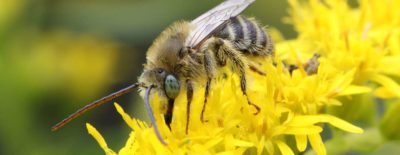
Goldenrod
Though there is significant overlap with the previous group, a few Long-horned Bees seems to prefer goldenrods. One, Melissodes illatus is not identifiable from photos, while Melissodes druriellus can occasionally be distinctive (see above). Image courtesy Michael Veit
